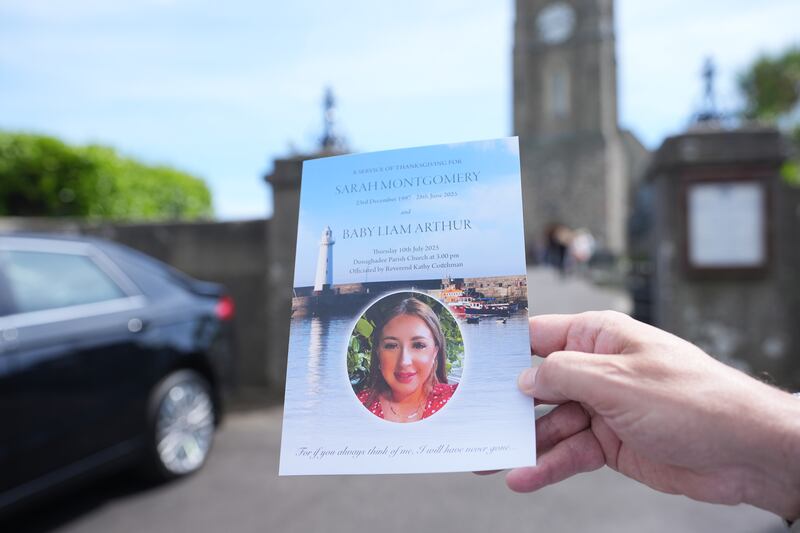One morning recently, I slipped out on a small kayak into the sheltered bay of Glengarriff Harbour in Cork. As the American naturalist Henry David Thoreau would have said, it was a “good lichen day”: mid-winter, damp and drizzly, the air thick with moisture.
The rocky islets within the harbour are home to the largest colony of common seals in the southwest of Ireland. Within seconds of entering the water, just 10m ahead, a large pair of glossy brown eyes stared my way. For the few hours I spent in the deep enclave of the harbour that morning, the seals were ever-present, appearing and disappearing, keeping a close eye on my movements.
Nearby, off a tiny island (colonised by the invasive scourge Rhododendron ponticum), an otter tumbled silently through the water. I made my way towards Garinish Island in the middle of the bay, accompanied by a handful of low-flying oystercatchers with their characteristic high-pitched whistling calls. And there, perched side by side high up on the crown of a pine tree at the edge of Garinish were a pair of vulture-like white-tailed sea eagles, staring down like imperial guards.
In the wintry landscape, the mint green hue of the semi-natural woodlands stood out. The trees, stripped of leaves, were draped in epiphytic lichens, transforming an otherwise barren view into something vibrant and lush, brightening the dullness. Fat with hydration from the winter rain, lichens are in their full glory in the colder months leading up to spring.
READ MORE
Lichenologist Maria Cullen suggested that I had probably seen the common greenshield lichen, Flavoparmelia caperata, which has a light apple green colour (think golden delicious, she said) and also the fluffy oakmoss, Evernia prunastri, a mint-coloured lichen that grows in tufts on the trunk and branches of oak trees.
It’s understandably tricky to imagine what a lichen is; it’s not just one thing but a close entanglement of a fungus and an algae or cyanobacteria, which grow together, forming a miniature ecosystem. Think of a hand and a glove; the fungus, the bulk of the lichen, acts as the glove, providing structure and protection, while the algae or cyanobacteria act as the hand, giving life by harvesting the energy from the sun. In this close, mutually reliant partnership, they can colonise a much more comprehensive range of habitats than they could individually.
[ Plight of hen harrier pits nature against climate policiesOpens in new window ]
Lichens are so ubiquitous that they have their own hashtag, #lichensubstrates, where people post photographs of the strange and surprising places where lichens grow – from abandoned garden trampolines to wooden pegs, street lamps, car tyres, plastic bottles and ropes, metal bird feeders, snail shells and picnic tables. There are some 1,250 species in Ireland, and they’re all over the place – on trees and rocks, soils, ingrained in stonewalls, old slate roofs, fences, railings, and metal signs. If you go for a walk on pavement, you’ll easily spot what appears to be blotches of flattened, grey chewing gum; what you’re looking at is most likely the waxy, crustose lichen Lecacnora muralis.
“noting the lichen / That writes history on the page / Of the grey rock,” wrote the Welsh poet RS Thomas in his poem Ninetieth Birthday, as he reflected on the connection between nature and time, using the image of lichen as a symbol of endurance. Lichens are evidence of longevity, Cullen tells me. As long as we don’t endlessly disturb their habitats, they will go dormant when conditions aren’t favourable and wait until things improve. There’s a lichen in the Arctic, Rhizocarpon geographicum, the map lichen, that is thought to be 8,600 years old.
They can jump from one substrate to another. For example, if they’re living on a dying tree, lichens can sense what’s ahead and will actively produce and disperse spores before the tree falls over and dies; in this way, if they land on a nearby stonewall or rock, they might continue to live.
On Snave Beach in Bantry Bay, Cullen and fellow lichenologist Howard Fox discovered a remnant lungwort, Lobaria virens, on rocks on the beach. The lichen likely began life on an oak tree nearby, which has long died. This lichen is now only found in Kerry and parts of the Burren.
There are three other lungworts in Ireland. One of them, Lobaria amplissima, is now only found in Killarney National Park. The textured lungwort, Lobaria scrobiculata, is also reduced to areas of old woodland, mainly in the southwest (while searching for it in Leitrim during lockdown, Cullen only found it on one tree). Finally, there’s Lobaria pulmonaria, which is increasingly confined to the west of Ireland because of nutrient pollution in the east and southeast of the country.
[ The Irish bog is under attack from rule-flouting dairy farmingOpens in new window ]
Because they get their nutrients from the air, lichens are sponges. If the air is polluted with nitrogen and sulphur dioxide, these will quickly accumulate in the lichen and become toxic. Because of this rapid response, lichens tell us about the quality of the air we breathe.
The Flora Protection Order is a piece of legislation that makes it illegal to cut or damage a listed species wherever the plants are found. Only one lichen makes the list – the “scrambled egg lichen” – and Cullen says if we are serious about valuing them, we need a lot more on the list. In Ireland, lichens aren’t specifically tracked as a standalone category in conservation, nor is there yet a red list for them which would assess their conservation status and identify those in need of help. Without our attention and positive intent, there’s a danger the spectacular diversity of lichens will continue to dwindle in numbers. Given how much they help us read the landscape and atmosphere, we’d do well to mind them better.
- Listen to our Inside Politics Podcast for the latest analysis and chat
- Sign up for push alerts and have the best news, analysis and comment delivered directly to your phone
- Find The Irish Times on WhatsApp and stay up to date




















